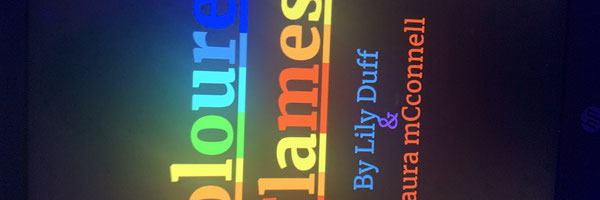coloured flames
Grade 6
Presentation
Hypothesis
If we manipulate different chemicals into the controlled flame, then the responding colour will differ because the chemicals have a chemical reaction where the atoms get excited then cool down. The reaction changes the flames apperence, therefore it changes colour.
If each chemical causes the flame to react differently, then each chemical might have a different amount of energy, which means some chemicals will result with a brighter colour than others because the chemical might be stronger than the other chemicals.
Research
Laura and I did some reaserch and found out which colours will actually effect the fire, then used a tutorial on YouTube (Step by step science) to get some more chemical ideas.
We used a picture on which chemicals work the best and used some of the chemicals we wanted for different colours.
Website: Science notes
Variables
Controlled Variable-The fire coming from the blowtorch
Manipulated Variable-The chemicals for different coloured flames
Responding Variable-The flame changing i'ts apperence (The change of colour)
Procedure
Laura and I got our stuff ready with the blowtorch and the chemicals, then we put on safety goggles and aprons. We got out our logbooks to take notes of our observations washed our hands. (A very important part for doing anything) We used a metal wire to hold the chemicals and took turns putting the chemical into the fire the blowtorch made and recorded the results into our logbooks, then we would wash the metal wire so the chemicals didn't mix and effect the results. We continued to do this with all the chemicals we chose.
Observations
The observations we made with the experiment was: If you mixed different chemicals like strontium chloride and copper chloride, the flame would be multicolour. Magnesium sulfate would start off almost in visible, then would turn to a bright orange before turning into a bluish-orangish "fire" colour again. Magnesium chloride did not change the colour of the flame at all, but when it was heated, the chemical would drip off the wire and freeze into an "ice bubble" sort of thing. Calcium chloride would be a scarlet colour with a small tint of purple and green. Copper sulfate was bright green that looked like miniature northern lights. Sodium carbonate did not effect the flame very much, only made it a little bit brighter than normal fire colour.
Analysis
Different cheicals effect fire differently because the atoms in the fire and chemicals get excited and bounce around, so when it cools down and the atoms slow down, it results in a different colour because when the electrons jump back, they now have different energy levels and therefore emit a light with a different wavelength or colour.
Conclusion
In conclusion, the fire changes colour when the atoms from different chemicals have different numbers of electrons in their electron shells, so as the electrons jump back, the photons have different wavelength than before, therefore causing the change of colour.
Application
Step 1 Wash hands
Step 2 get and put on protective gear (Goggles, apron, gloves, etc)
Step 3 Get supplies (Chemicals, water, blowtorch, metal wire wand, protective gear, scoopula, etc)
Step 4 Preform experament, turn on the blowtorch and dip your metal wire into the water so the chemicals stick, then into the chemicals on a plate. Then hold the wire in the flame and see it change colour.
Sources Of Error
Using chemicals that don't effect the fire, not recording the results and forgetting, burning the school down, burning us, dangerous chemicals making contact with bare skin, being to scared to actually do the experament
Citations
Science notes-How to make coloured flames at home-Flame colour chart
Quora-Why do some elements produce colourful flames?
YouTube-Step by step science-how to change the colour of flames
Acknowledgement
Lily acknowledgement: Thank you to Laura, who did the project with me, Mr.Hauk, who showed me and guided me along the way, Ms.James, who did the flame test with Laura and I. And thank you to CYSF, for approving our forms!
Laura acknowledgement: Mr. hauk was incredibly supportive and helpful when it came to this project specifficaly when he emailed cysf to approve our experiment .Lily Duff was extremly fun to work with she was so flexible when it came to ideas. Ms. James was so kind to help us with a flame test after school she was also extremly supportive.

